How to Make Fabric Face Masks

In these trying times face masks have become a necessity for many people. People all over the world are looking for that added protection and can't find it. We, as sewists can help those who cannot find the help they need by making these face masks and giving them to local charities, hospitals and the elderly. This is a very simple sewing project that anyone with basic sewing skills can make. You can use remnants like I did or delve into your stash to create your masks. They can be made in a matter of minutes and will go a long way in helping those in need. I took this pattern from a N95 shaped mask. The pattern can easily be adjusted to make it larger or smaller if you want. This will not replace a surgical mask or an actual N95 mask. If you would like a filtered face mask check out my latest mask tutorial here. If you would like a more breathable version of this mask check out my breathable face mask pattern here.
If you would like a video tutorial of this project head over to YouTube and watch my step-by-step video and while you are there subscribe to my channel and give me a thumbs up.
If you would like a simple pouch where you can store your face mask check out my simple face mask pouch project here.
What you will Need: How to Make Face Masks
- Pattern you can get Here. Click Here to get the pattern.
- 1/4 yd outer fabric
- 1/4 yd inner fabric
- 14″ of 1/4″ elastic
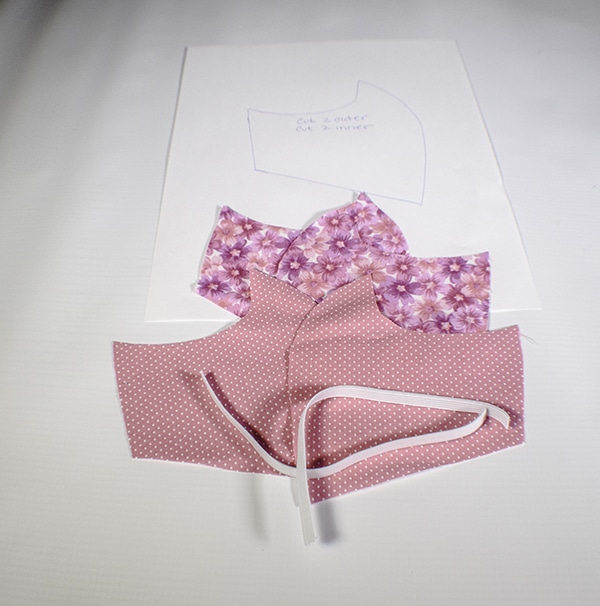
Step 1: Cut out the Pattern and Fabrics
Cut out the pattern. Cut four pieces of fabric using the pattern piece. If you want your mask to be reversible cut two from one fabric and two from the other. Make sure they are mirror images of each other. This should come naturally if you are cutting the two pieces on the folded fabric. If you are cutting on a single layer of fabric make sure to turn the pattern over for one of the pieces of each fabric color or pattern. Mark the location of elastic.
Step 2: Stitch the two pieces together
Pin the curved edge of the fabric pieces right sides together and stitch using a 1/4″ seam allowance. Repeat this for the other fabric pieces. You should have two masks exactly the same.
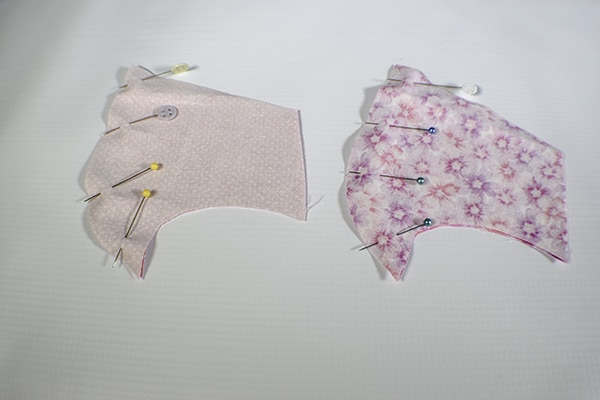
Step 3: Add the elastic
Pin the elastic at the marks on the pattern. Tack the elastic into place by stitching over it a few times with your machine using a 1/8″ seam allowance.
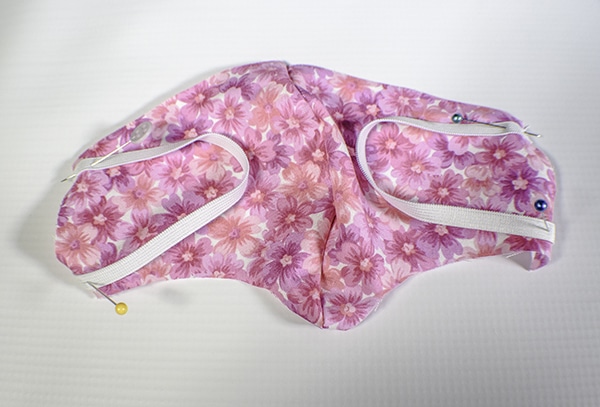
Step 4: stitch the pieces RIght sides together
Place the two masks right sides together with the elastic in the center. Stitch all the way around the mask using a 1/4″ seam allowance but leaving a small opening at the bottom for turning.
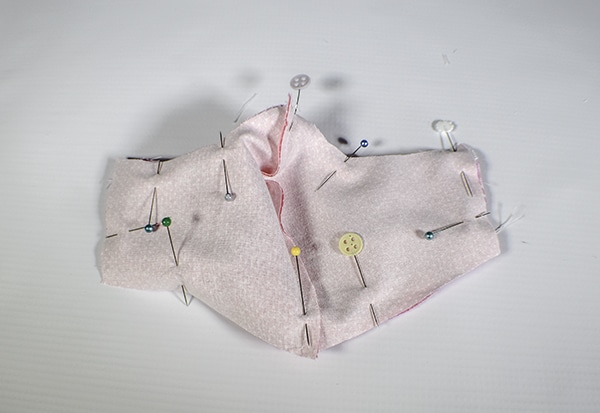
Step 5: Turn the Mask
Turn the mask right sides out and top stitch all the way around closing the opening as you go. You have now finished your fabric face mask.
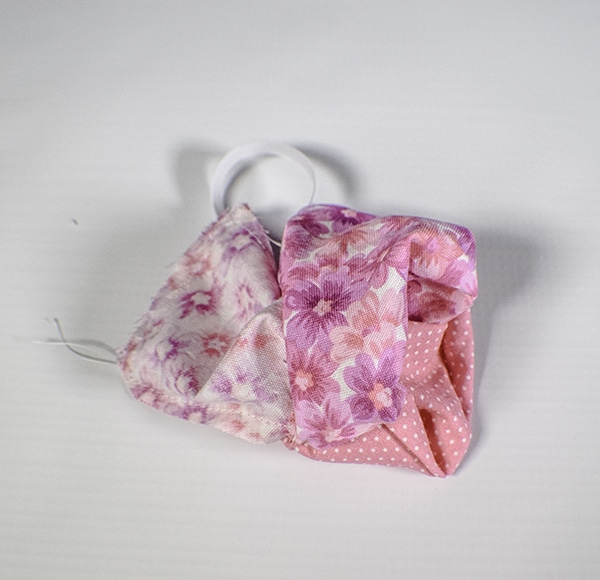
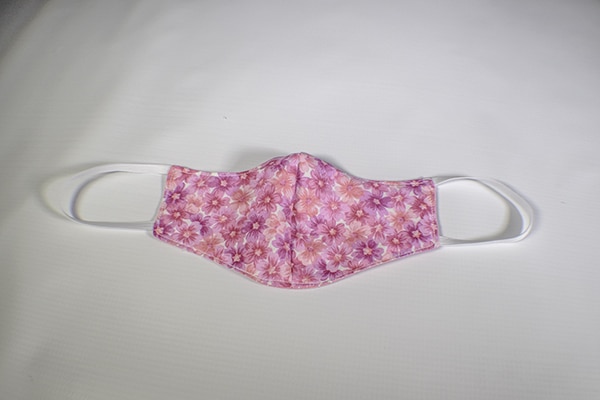

I hope this project inspired you to create something for charity. If you would like more sewing and crafting projects sign up for our newsletter and receive access to our free printables library.
Check out my free Chemo Cap pattern and tutorial for another charitable project for those in need.
If you would like video tutorials of some of Sew Very Crafty's most popular posts subscribe to our free YouTube Channel Here.

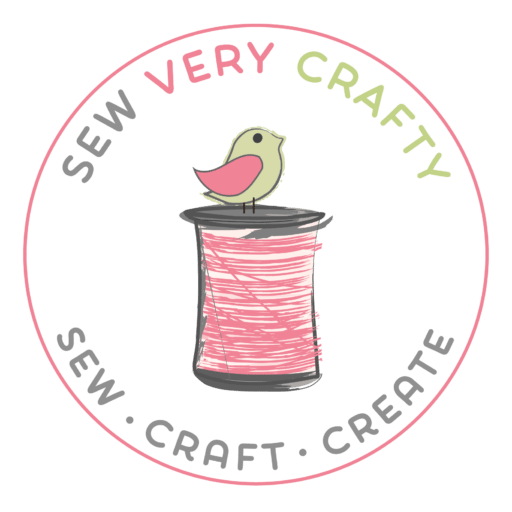




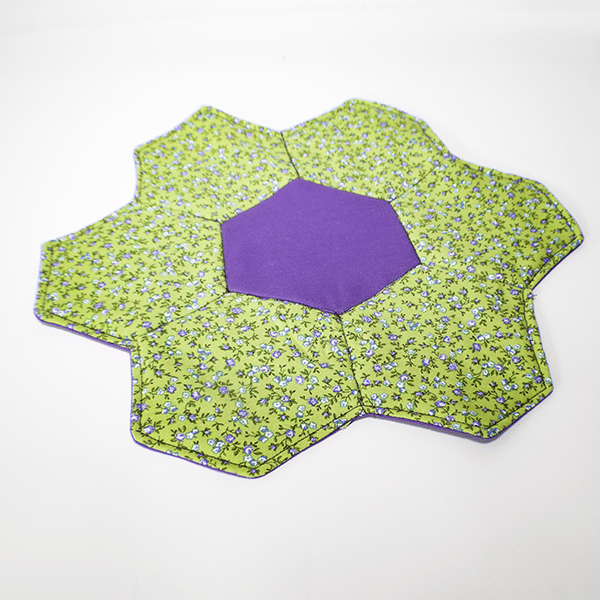


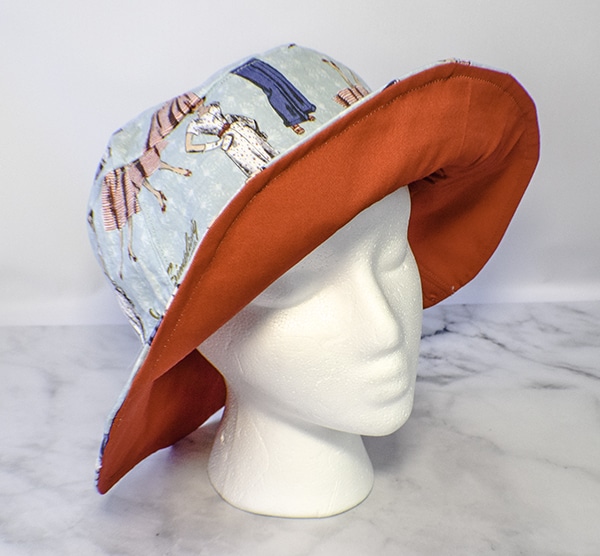
I am unable to download the pattern. What am I doing wrong?
You should just be able to click on the link. I will email it to you right now just in case.
https://www.youtube.com/watch?v=ZnVk12sFRkY
This youtube knows how this download pattern works, so youcan reach out to them.
Thanks for this tutorial. I cut out masks using a similar pattern but the sewing instructions were so complicated that I couldn’t get one put together properly. I’ve had a pile of fronts and backs on the table for two days and now I can finally finish the 20+ masks and get then out where they are needed.
You’re welcome I am so glad I could be of some help. Good luck with the masks ans stay safe.
I cannot work out the measurements or how to download. Desperately want to make lots of these for family and friends.
The link should be on the site by clicking on the link but just in case it is not I will email it to you. As for the size. This is a fairly large mask. You can make it smaller by just tracing inside the pattern or shortening the elastic.
Please email me the pattern for facemasks, could not download. Thank You
No Problem.
Please don’t use pins as they create unnecessary holes in the fabric. Likewise, consider omitting the top stitching. Likewise, unnecessary holes. In place of pins, clips of any kind work – paper clips, clips from plastic hangers, wonder clips, or just hold the fabric together. A lot of people are making masks with pockets for filters. HEPA vacuum bags can be cut up for filters. Remember to wash the mask after wearing, be careful how you remove it, and, if reused, ensure you place the same side outward each time.
Thank you for these tips. I also have a filtered mask on the site. You can find it here. https://sewverycrafty.com/how-to-make-a-filtered-face-mask/
Thank you for this pattern. I made two of them today in no time at all. Very easy and fits great.
Your welcome. That’s fantastic. I have made several.
Please email the pattern to me. It won’t download. Thanks
Emailed the pattern to you. Sorry it wouldn’t download for you.
I’m super excited to try this. Can you email the template?
Yes, I have sent it. Stay Safe. Diana
I don’t seem to be able to find the link for the pattern. Can you email it to me?
Yes, I have just sent it.
can I have the pattern email as well?
Sent it. Not sure why it is not downloading from the site.
Can you email it to me also please?
Yes, I have just mailed it. Sorry for the inconvenience.
Sorry but I am unable to find/download the link for the pattern for these masks… Can you email it to me? Thank you….
Yes. I have sent it.
Thank you! Where is the link located?
The link is where it says pattern you can get here. Just click on those words.
Could you please email me the pattern. I don’t know the measurements and I dont see where to download it. Thank you
Done. Thanks for trying the project and I apologize for the confusion.
Good day. Thank you for your tutorial. We are desperate for masks in South Africa. I cannot find the pattern on the site. Would you be so kind and email it to me.
Thank you. Be safe
All taken care of. Stay safe.
Link won’t work??
I am so sorry. I will fix it. But in the mean time I will email it to you.
Can you please sent me the pattern. They certainly look easy to make and fast.
Yes. I will send it now.
Thank you so much for sharing this video. Can you please send me the pattern to my email??
Yes. I will send it now.
Could you please email me this pattern also. Thank you so much!
I just sent it. Thanks you.
Making 20 for one of our local library branches. Volunteer project and the fabric has beautiful books all over them. If they have to go back to work. I can do it this for them.
That is awesome!!!
Thank you for your time, talent and generosity. Suggestions for next tutorial, video the sewing of the project. It’s very helpful to see the sewing. Use good lighting. Your lighting was ok, would be great if your “set” was lit somewhat brighter. Spend less time describing the process and more time doing the project. I too have been sewing masks for family and whoever needs them. My suggestions are meant to positively affect your future blogs/videos. Stay well!?
Thank you so much for the suggestions. I haven’t been doing video very long and need all the help I can get. Stay safe and thanks again.
HEPA vacuum bags contain chemicals and are not safe to breathe. Please do not use these as filters for masks. Facial tissue, paper towels, coffee filters, batting, non woven fabric, etc. are much safer and are effective.
Thank you for that. I will remove the recommendation.
I’m unable to download the pattern.
I have emailed them to you.
Can you email me the pattern? Thank you.
Yes, I have emailed it. Sorry for the inconvenience.
Can’t seem to load this to print. Please email it to me, looks like a nice simple mask.